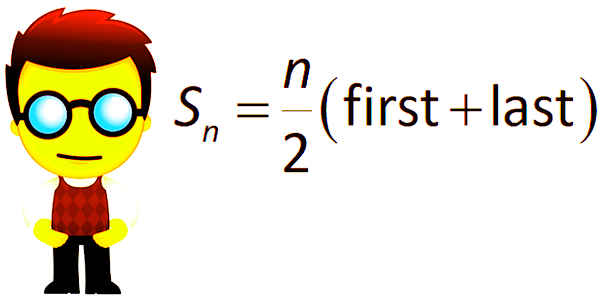Exercises
- The sum to $n$ terms of an A.P. is $35$. The common difference is $2$ and the sum to $2 n$ terms is 120 . Find the first term.
- An A.P., with first term 8 and common difference $d$, consists of 101 terms. Given that the sum of the last three terms is 3 times the sum of the first three terms, find the value of $d$.
- The sum of the first $n$ terms of an A.P. $3,5 \dfrac{1}{2}, 8, \ldots$ is equal to the $2 n^{\text {th }}$ term of the A.P $16 \dfrac{1}{2}, 28 \dfrac{1}{2}, 40 \dfrac{1}{2}, \ldots .$ Calculate the value of $n$.
- The sum of the first $n$ terms of a certain sequence is given by $S_{n}=n^{2}+2 n$. Find the first 3 terms of the sequence and express the $n^{\text {th }}$ term in terms of $n$.
- If the sum of $n$ terms of a certain sequence is $2 n+3 n^{2}$, find the $n^{\text {th }}$ term. Hence show that this sequence is an arithmetic progression.
- The sum of $n$ terms of two arithmetic progressions are in the ratio $(3 n+8) \vdots(7 n+$ 15). Find the ratio of their $12^{\text {th }}$ terms.
- An A.P. contains $30$ terms. Given that the $10^{\text {th }}$ term is $21$ and that the sum of the last $10$ terms is $675$ , find the sum of the first $10$ terms.
- If $S_{1}, S_{2}, S_{3}$ be sums to $n, 2 n, 3 n$ terms of an arithmetic progression, Show that $S_{3}=3\left(S_{2}-S_{1}\right)$.
- In an A.P., if $p^{\text {th }}$ term is $\dfrac{1}{q}$ and $q^{\text {th }}$ term is $\dfrac{1}{p}$, prove that the sum of first $p q$ terms is $\dfrac{1}{2}(p q+1)$, where $p \neq q$.
- An arithmetic progression has third term $90$ and fifth term $80$.
(a) Find the first term and the common difference.
(b) Find the value of $m$ given that the sum of the first $m$ terms is equal to the sum of the first $(m+1)$ terms.
(c) Find the value of $n$ given that the sum of the first $n$ terms is zero. - An arithmetic progression contains $25$ terms and the first term is $-15$. The sum of all the terms in the progression is $525$. Calculate
(a) the common difference of the progression,
(b) the last term in the progression,
(c) the sum of all the positive terms in the progression. - If the sum of $n$ terms of an A.P. is $n P+\dfrac{1}{2} n(n-1) Q$, where $P$ and $Q$ are constants, find the common difference.
- If the sum of first $p$ terms of an A.P. is equal to the sum of the first $q$ terms where $p \neq q$, then find the sum of the first $(p+q)$ terms.
- Prove that the sum of $n$ arithmetic means between two numbers is $n$ times the single A.M. between them.
- The first term of an A.P. is $x$, the second term is $y$ and the last term is $z$. Show that the sum of the A.P. is $\dfrac{(y+z-2 x)(z+x)}{2(y-x)}$.
- The ratio of the sums of $m$ and $n$ terms of an A.P. is $m^{2}: n^{2}$. Show that the ratio of $m^{\text {th }}$ and $n^{\text {th }}$ terms is $(2 m-1):(2 n-1)$.
- The sum of three numbers in an A.P. is $12$ and the sum of their cubes is $408$. Find the numbers.
စာဖတ်သူ၏ အမြင်ကို လေးစားစွာစောင့်မျှော်လျက်!

